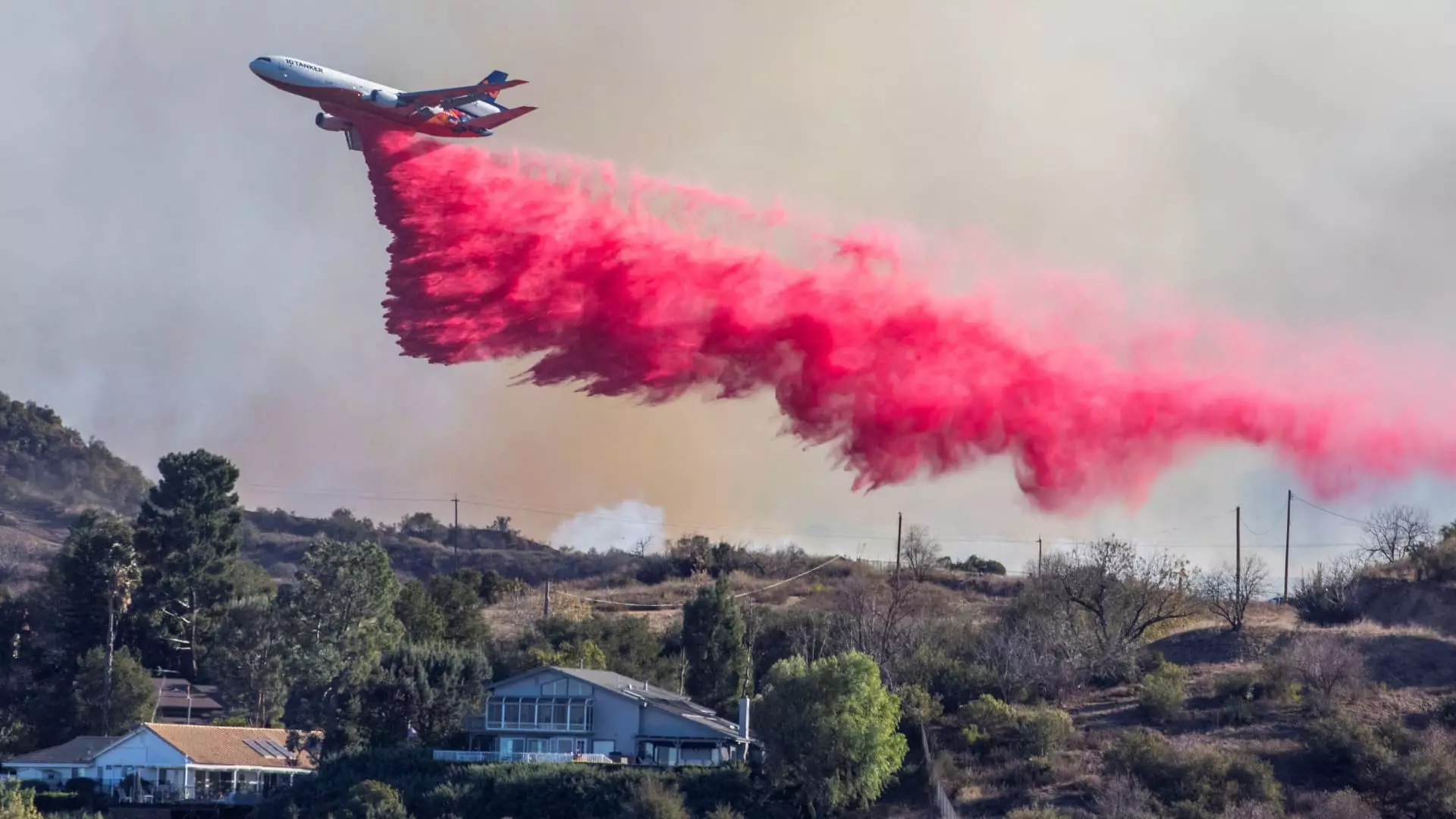The threat posed by wildfires to communities across the United States, notably in California, has ignited a pressing demand for aerial firefighting capabilities. As wildfires become increasingly rampant due to climate change and environmental conditions, the stakeholders in fire suppression—ranging from government agencies to private companies—are grappling with the limitations of their resources and the growing challenges they face.
Historically, the wildfire season in the U.S. spans from April to November, with aerial support deemed necessary during these months. However, the unprecedented ferocity of recent wildfires, such as those in Los Angeles, underscores a need for more responsive and adaptable firefighting strategies. The recent Los Angeles wildfires, fueled by strong winds and dry conditions, demonstrate that fire activity can and does occur outside the traditional season. As a result, companies that usually prepare for off-season maintenance were caught unprepared, leading to access limitations for vital aerial support at crucial moments.
Joel Kerley, CEO of 10 Tanker Air Carrier, emphasized the critical nature of air support during these disasters. His company’s fleet, comprising large DC-10 aircraft, faced a high demand for aerial firefighting at a time typically marked by reduced activity. Indeed, the performance of these air tankers is pivotal; they have dropped substantial quantities of fire retardant to combat fires, but systematic challenges can hinder swift mobilization.
The struggle for adequate firefighting aircraft reflects a broader issue: the existing fleet is insufficient to meet the escalating needs arising from increasingly ferocious wildfire seasons. Kerley pointed out a fundamental truth: “There’s not enough air tankers to go around.” This statement serves as a wake-up call to policymakers and industry leaders alike. Key players in the fight against wildfires must now recognize that without an expanded fleet of aerial resources—both in numbers and capability—the fight against destructive wildfires will become even more challenging.
Countries around the globe have faced their share of wildfire crises in recent years. Australia, for example, has ramped up its investment in aerial firefighting capabilities. As these nations confront the growing threat of wildfires firsthand, the need for collaboration and shared resources across borders becomes increasingly crucial. Companies like 10 Tanker may find themselves taking on a greater role in firefighting efforts globally, signaling the emergence of a new, interconnected approach to wildfire management.
Innovations in aircraft technology and firefighting tactics are essential as wildfires become more pervasive. Aerial firefighting companies are investing in new aircraft, adapting existing planes, and re-evaluating their operations in light of ever-changing conditions on the ground. For instance, the highly specialized water scooping aircraft developed by companies like Bridger Aerospace allow for rapid water retrieval and distribution. The efficiency of these aircraft could reshape how firefighters engage with wildfires.
The complexity of equipping aircraft for firefighting further complicates expansion efforts. For instance, the conversion process for planes intended for aerial firefighting can take over a year, often requiring substantial financial and temporal investment. This realization accentuates the importance of proactive measures in both the public and private sectors.
Complementing advancements in technology is the need for skilled personnel in aerial firefighting. Many pilots come from diverse backgrounds, including military and commercial aviation, emphasizing that aerial firefighting is a unique niche that requires specific skills and training. As demand for aerial firefighting pilots increases, companies must streamline training and recruitment to ensure they have a competent workforce ready to respond when emergencies arise.
Firefighters on the ground, along with aerial support teams, must work in tandem to develop comprehensive strategies for wildfire suppression. Communication between air and ground teams enhances effectiveness, allowing for the best possible response to rapidly changing conditions in the field. Coordination at all operational levels is vital to combating wildfires that can rapidly escalate, threatening lives and property.
As fires spread with increasing frequency and intensity, stakeholders in the firefighting community must adapt and evolve to meet unprecedented challenges. A combination of enhanced aerial capabilities, investments in training, and collaborative efforts among nations can lead to better preparedness for the growing fire seasons ahead. Governments, industries, and communities must unite to create a sustainable approach that addresses the immediate needs of our fire response capabilities while also planning for the future—a future where wildfires, fueled by climate change, will require innovative and comprehensive firefighting solutions. Only through commitment and foresight can we hope to protect lives and preserve the environments at risk from these devastating infernos.


Leave a Reply